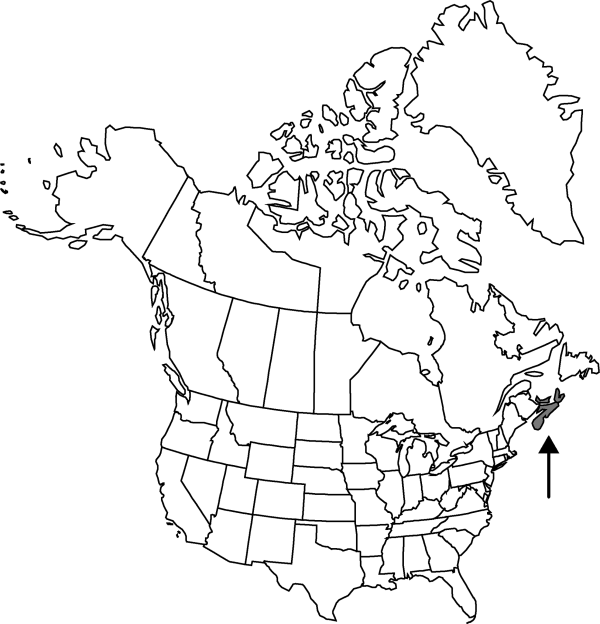Atriplex glabriuscula var. franktonii
Rhodora 102: 417. 2001.
Herbs, prostrate, decumbent, or erect, sparsely branched, 1.5–5 dm; stems green, often red striped, subangular, scurfy. Leaves opposite proximally; petiole (0–)0.5–2.5(–3) cm; blade triangular-hastate (or hastate and triangular-acuminate) with pair of broad, spreading or antrorse lobes or smaller, short petiolate or subsessile and lance-hastate to lanceolate or lance-oblong distally, (10–)15–80 × (3–)5–65 mm, margin denticulate to entire. Flowers, both staminate and pistillate, in glomerules arranged in interrupted spikes terminal on stems and branches and in axils of distal leaves, lacking leafy bracts except at base. Fruiting bracteoles often reddish becoming brown to black in age, sessile or subsessile, or some axillary ones short stipitate, venation obscure to prominent, triangular-hastate, 3–11 mm, base truncate to subcordate or obtuse, united at base, margin denticulate to laciniate, apex acute to acuminate, faces smooth or with 2 small tubercles. Seeds dimorphic: brown, convex, 2.8–3.6 mm wide, often the only ones present, or black, 1–2 mm. 2n = 18.
Phenology: Flowering late summer–fall.
Habitat: Sandy beaches, often covered with wrack of fucoids and Chondrus
Elevation: 0-50 m
Discussion
Atriplex glabriuscula var. franktonii has been placed in synonymy with A. hastata Linnaeus, i.e., A. prostrata Boucher ex de Candolle, by H. A. Gleason and A. Cronquist (1991), but is evidently more nearly allied to A. glabriuscula within whose range it is completely submersed. It is likewise evidently confined to indigenous salt marsh and beach habitats, unlike the clearly ruderal weedy status of the evidently largely, if not entirely, introduced A. prostrata. P. M. Taschereau (pers. comm.) notes that “the continuous coastal distribution of A. prostrata suggests... that it is native in these saline areas,” but “that the anthropophytic weedy A. prostrata is undoubtedly introduced.”
Selected References
None.
